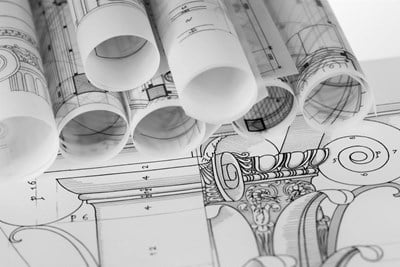Although the work done by architects and engineers can overlap in some respects, they are two distinct fields. Most people can identify with one over the other, and it’s difficult to find someone who can excel in both. Let’s take a look at each.
Job Duties
On the surface, they have to meet a different set of tasks. It’s an architect’s job to design buildings, focusing on the basic outline of the structure. Then, engineers come along and design all of the complicated innerworkings or the building: the machinery needed to keep it functioning properly. Architects are also tasked with overseeing the construction of the buildings they design (the word ‘architect’ comes from roots that literally translate to ‘chief builder’).
Characteristics and Qualities
The main factors that force the difference between architecture and engineering stem from the diverse people who are drawn to each. Where architects tend to be more geared toward creative design and artistic voice, engineers often like to focus on practicality and logical precision in their work. When the two are combined, the result is often a structure which is able to meet all of the mathematical requirements needed to function as intended while also creating an atmosphere that patrons can latch onto. This ebb and flow of viewpoints helps to form a system of checks and balances that ensures the best result for everyone.
Educational Requirements
Another big difference is the set of requirements for certification. They start off with different majors in school and then have to take different licensing exams to become qualified to do their jobs. Here, an engineer can choose to focus his or her expertise into a unique area of specialization. These include civil, mechanical, electrical, industrial, chemical, aeronautical, lighting, sound, and software engineering. As you can imagine, each area of engineer certification comes with its own job description.
Differing Projects
When architects and engineers enter the workforce, they usually begin tackling projects that closely interweave into their personal interest. This can help them build (get it?) a reputation for a certain type of assignment, which can guide the direction that their careers will travel. Some projects are more likely to fall into the hands of an architect than an engineer, and vice versa, but an established worker in either field can choose a variety of assignments. Creating a system for electrical wiring would most likely go to an engineer and designing the waiting room of a doctor’s office would probably be assigned to an architect, but not every project is that black and white.
Although architects and engineers can easily be mistaken for one another by people outside of the industry, they play different (yet equally important) roles in ensuring that societies run as smoothly as possible. They must work together to develop functioning, visually pleasing structures. I certainly wouldn’t want to live in a world without either of them.



